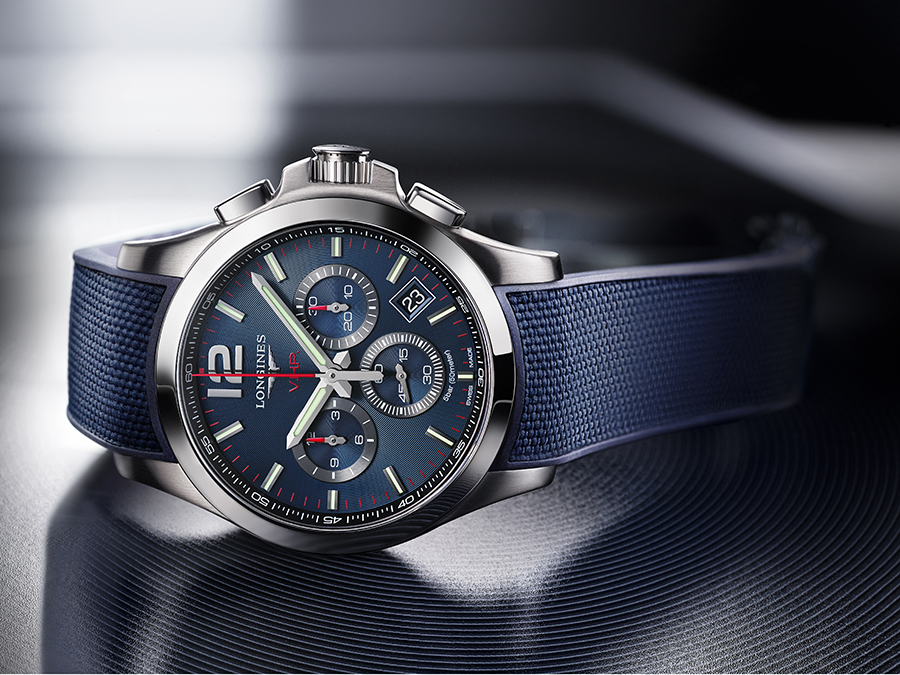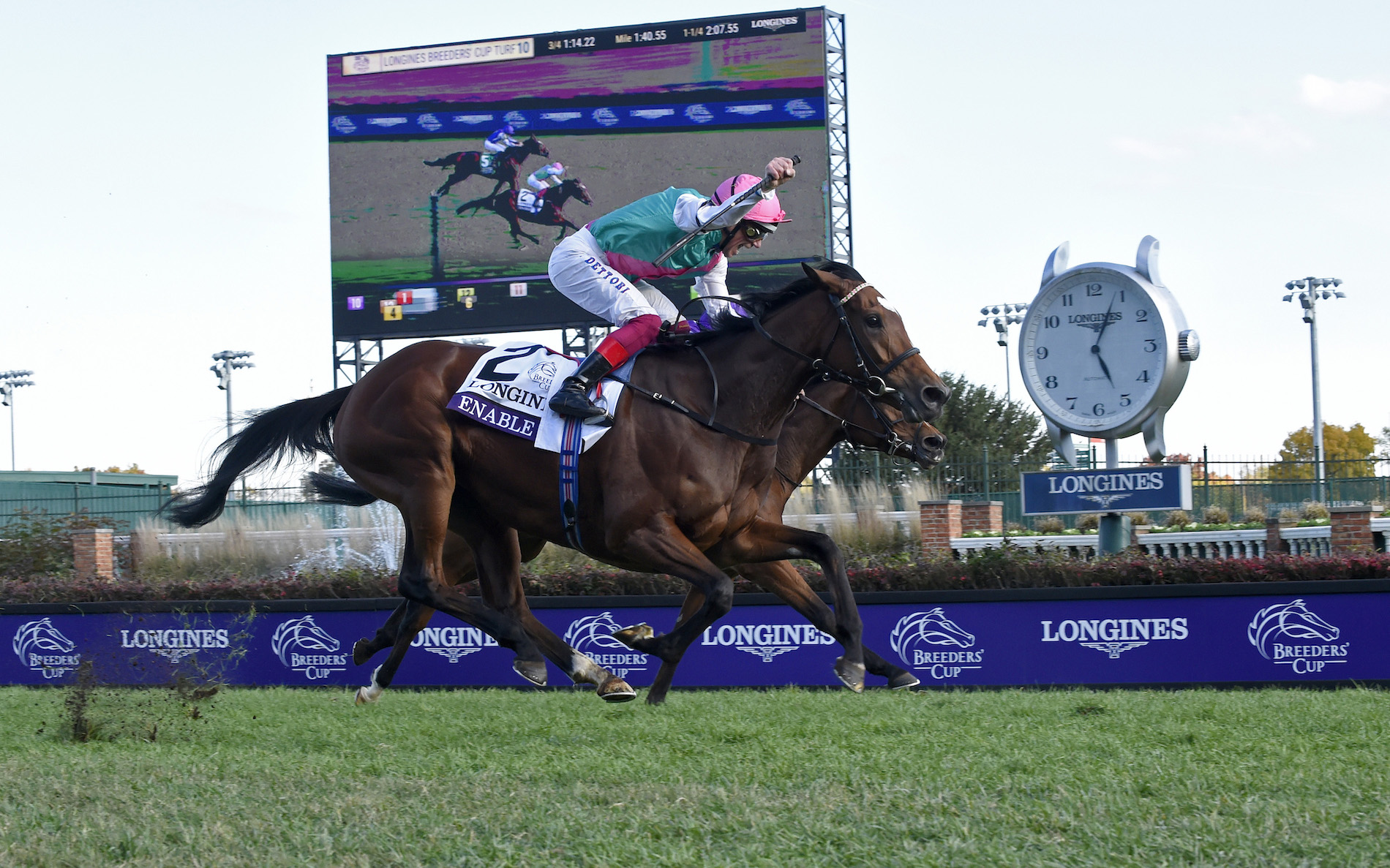
Jockey Lanfranco Dettori, on Enable, wins the Longines Breeders’ Cup Turf, Saturday, Nov. 3, 2018, at Churchill Downs in Louisville, KY. Longines, the Swiss watch manufacturer known for its elegant timepieces, is the Official Watch and Timekeeper of the Breeders’ Cup World Championships. (Diane Bondareff/AP Images for Longines)
Timing horse races is essentially an electronic endeavor, so it makes sense that the official watch of the Longines sponsored Breeders’ Cup, which took place over the weekend at Churchill Downs racetrack in Louisville, Kentucky, is the quartz Conquest V.H.P. In the early days of racing, each horse (or human) was timed by a team of guys with mechanical stopwatches, relying on their thumbs to start and stop the seconds hand at just the right moment and then averaging their scores.
Today, Longines uses Swiss Timing, the same Swatch Group division that its sister brand, Omega, relies on to time the Olympics. The timing and reporting apparatus involves a mass of electronics, including miles of optical cables, transponders, and photoelectric cell technology that can measure time in 1,000ths of a second and activate photo-finish cameras that take up to 10,000 images a second. It can then deliver the results to public scoreboards in real time. This is not the realm of mechanical watchmaking.

Longines timepieces are presented to the winning connections of Accelerate for the Breeders’ Cup Classic, Saturday, Nov. 3, 2018, at Churchill Downs in Louisville, KY. Longines, the Swiss watch manufacturer known for its elegant timepieces, is the Official Watch and Timekeeper of the Breeders’ Cup World Championships. (Diane Bondareff/AP Images for Longines)
Longines’ first connection to horse racing was in 1878 when it produced a pocket watch chronograph engraved with a jockey and his mount. In an era that predated official timing sponsorships, the watch was nevertheless a hit among enthusiasts in the stands of the world’s top racing events. By 1912, Longines was partnering with international show jumping competitions, and timing horse races. In 1954, it created a gizmo called the Chronocinégines, which was essentially a 16mm camera coupled with a quartz clock. In addition to timing, it took a series of still images every hundredth of a second, making it ideal for photo-finishes. Today, Longines times several equestrian and racing events, including the Kentucky Derby and the Breeders’ Cup, which I had the honor of attending with Longines this past weekend.
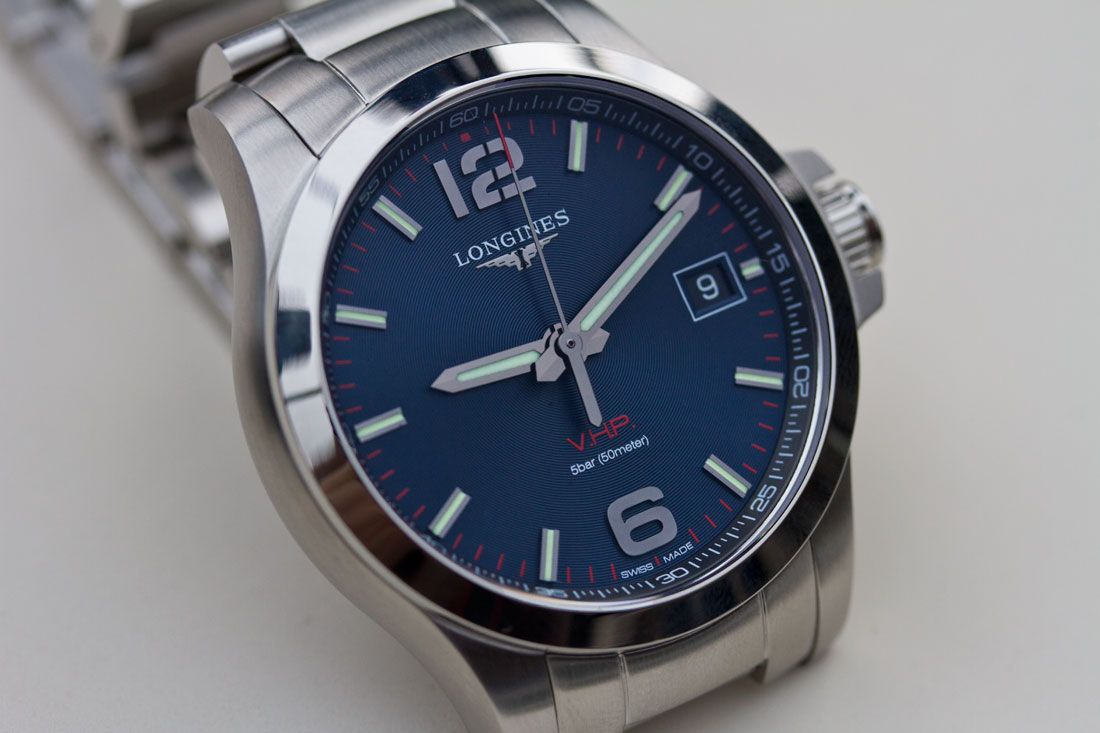
The official Breeder’s Cup watch is the Longines V.H.P. Conquest, 43mm steel with a blue dial, retailing for $1,050.
The Conquest V.H.P. (which stands for Very High Precision) is a nod to an original model introduced in 1984, but its history really goes back to 1954, when the brand’s first quartz watch set a precision record at the Neuchâtel Observatory competitions for accuracy and was used in the Chronocinégines. In 1969, Longines developed an Ultra-Quartz movement, its first designed for wristwatches. In 1984, a version of this highly accurate quartz caliber appeared in the first Conquest V.H.P., setting a precision record for that time.
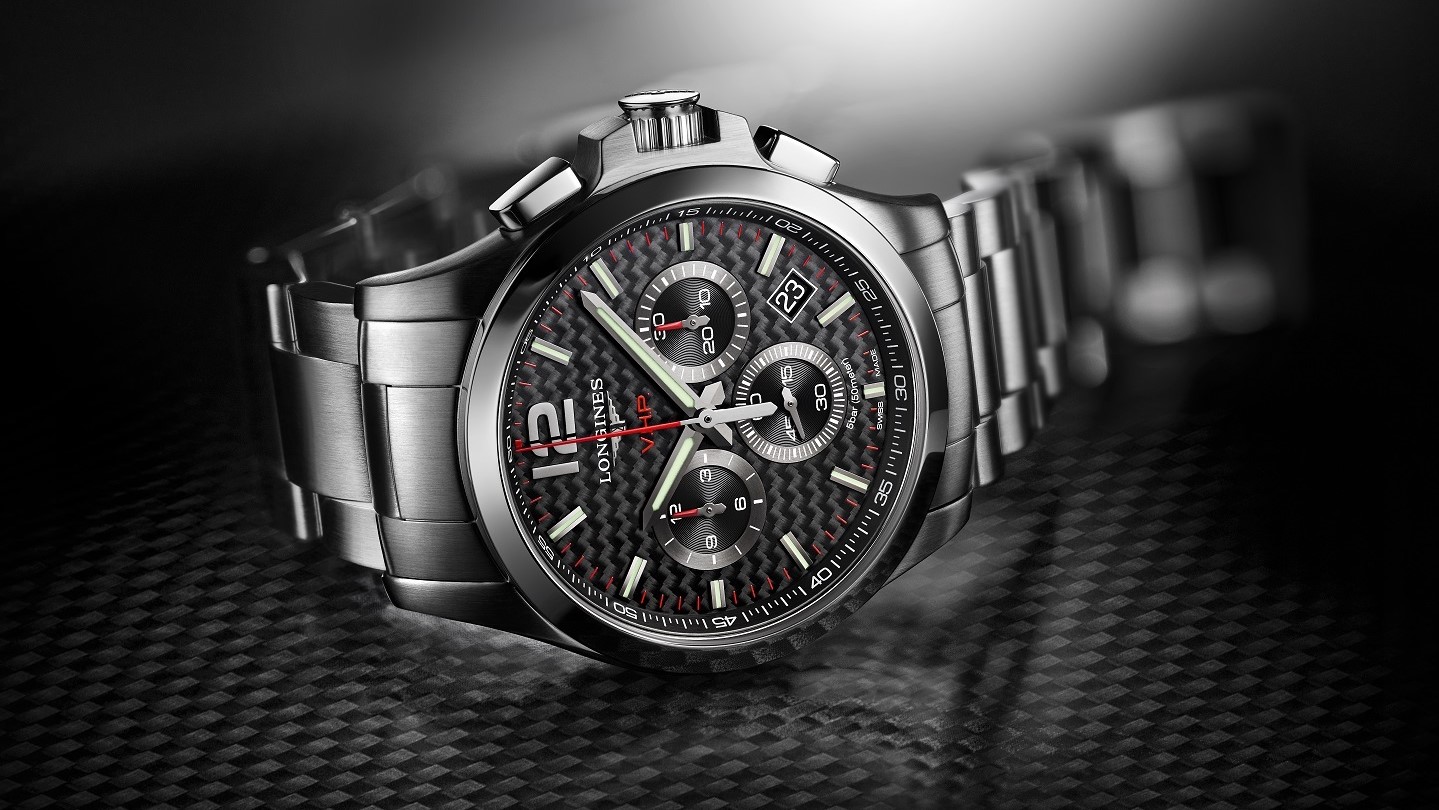
This year, Longines added a chronograph version of the movement to its Conquest V.H.P. line (reaching stores soon and priced from $1,700-$1,950). Functions include hours, minutes and central chronograph seconds, with 30-minute and 12-hour subdials, as well as a small seconds subdial and an all-important end-of-battery-life indicator. A GMT model is set to be released early next year, priced at $1,750. The watches are steel or steel with black PVD coating, in either 42mm or 44mm sizes. Dials are blue, carbon fiber, silver or black. Bracelets are steel, black PVD or rubber in either blue or black. All are water resistant to 50m, accurate to within ± 5 seconds per year, and have a five-year battery life. The full price range is $1,000 to $1,950. The official Breeder’s Cup model is the 43mm steel with a blue dial, retailing for $1,050.
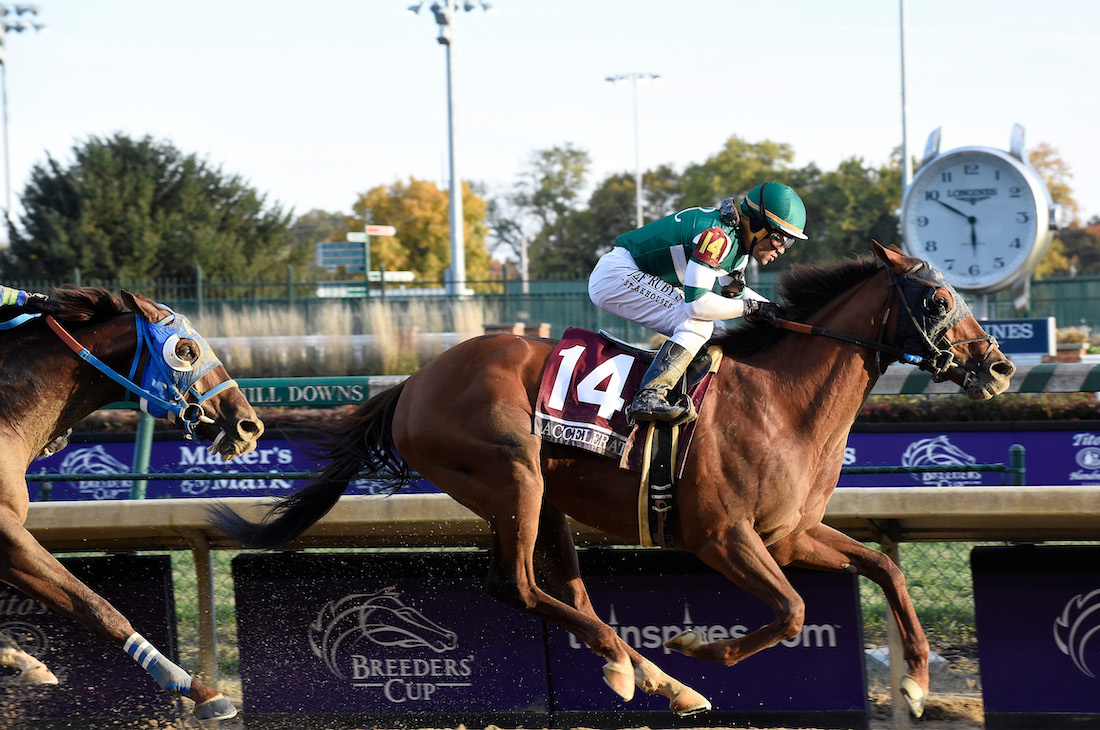
Jockey Joel Rosario, on Accelerate, wins the Breeders’ Cup Classic, Saturday, Nov. 3, 2018, at Churchill Downs in Louisville, KY. Longines, the Swiss watch manufacturer known for its elegant timepieces, is the Official Watch and Timekeeper of the Breeders’ Cup World Championships. (Diane Bondareff/AP Images for Longines)
Longines’ presence at equestrian events is a valuable marketing tool, reaching a crowd that has money and a sense of old-world style. Horse racing is by tradition an elite, aristocratic endeavor – the “Sport of Kings” – drawing high rollers and rich owners who vie for $30-million in prize money at the Breeders’ Cup alone, which is considered the Super Bowl of horse racing. Just getting a horse into the event, the richest two days in horse racing, is a major accomplishment, achieved by a complex system of previous wins, rankings, and selections made by a panel of experts.

We watched the races from the corporate box of all corporate boxes: The Mansion, a private lounge where Longines and other sponsor guests and high rollers watch the races, sipping champagne or Kentucky bourbon, the Gatorade of the Breeders’ Cup. Bo Derek, a Breeders’ Cup ambassador, and horse lover, perched under a large hat at one end of The Mansion bar on day two of the races, presiding over an entourage and occasionally venturing to the betting window. As a rookie, I was placing $2-$5 bets, but I watched a man in front of me cash in $27,000 on one race and then lose $12,000 on the next with the nonchalance of playing a round of monopoly. One minute you’re collecting rent from someone who visits your hotels on Boardwalk and the next, you’re landing at another player’s hotels on Park Place.
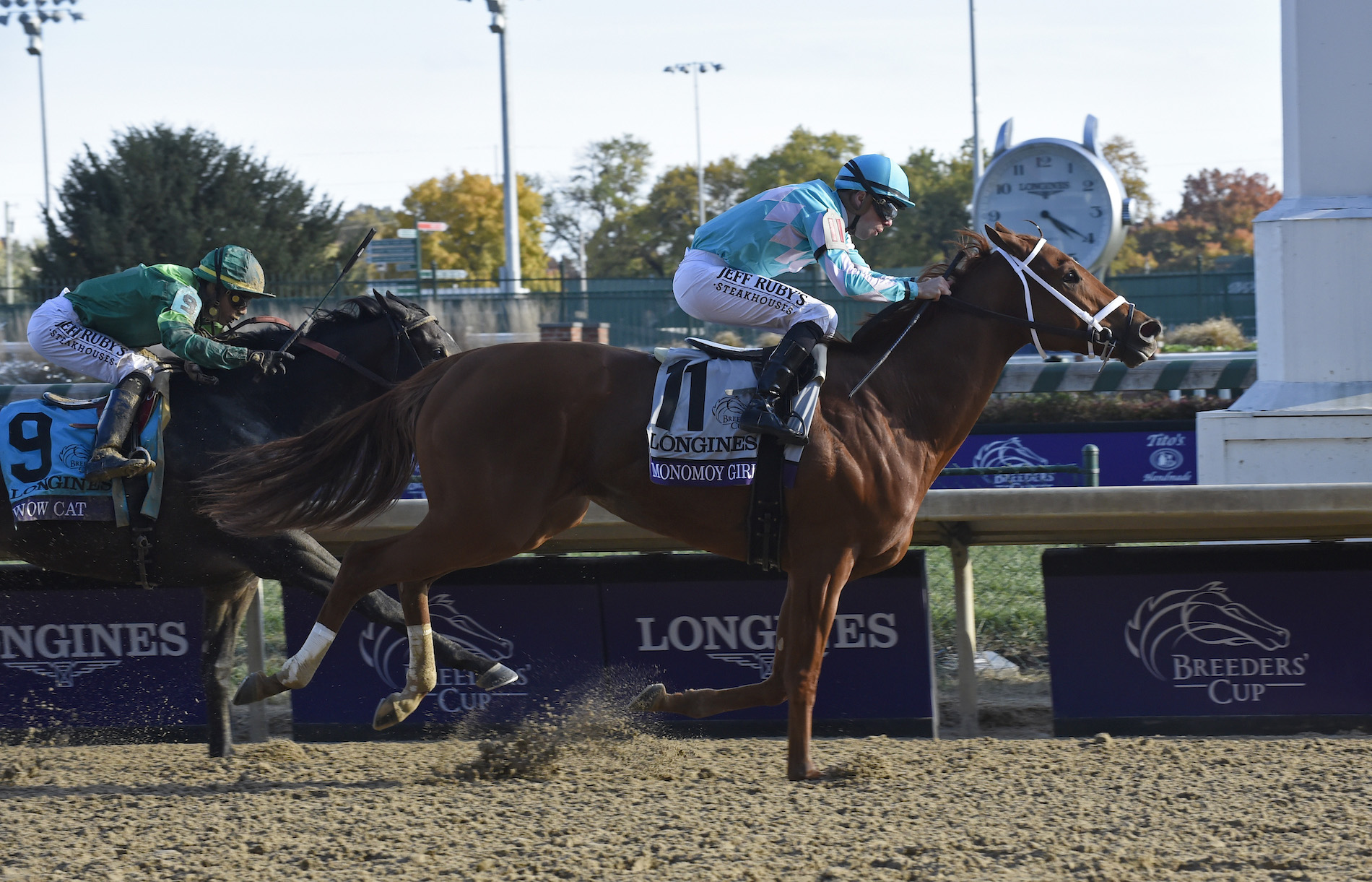
Jockey Florent Geroux, on Monomoy Girl, wins the Longines Breeders’ Cup Distaff, Saturday, Nov. 3, 2018, at Churchill Downs in Louisville, KY. Longines, the Swiss watch manufacturer known for its elegant timepieces, is the Official Watch and Timekeeper of the Breeders’ Cup World Championships. (Diane Bondareff/AP Images for Longines)
The men wear suit jackets and bow ties, and the women wear dresses and fancy hats or fascinators – there is even an official milliner on site selling last minute headgear replete with feathers, flowers, bows, and beads. Longines signage is everywhere throughout the grounds of Churchill Downs, including the stage on which it hosts the Longines Elegance Prize. Here, contestants, both men, and women line up beauty-contest style, holding paddles and introducing themselves one by one at the microphone. According to Longines, the prize “celebrates individual expressions of elegance, rewarding the man and woman who exude style, sophistication, and confidence.” The winners are chosen by a panel of judges that includes Pascal Savoy, president of Longines North America, and they are presented with Longines watches.
The winning owners, trainers, and jockeys of the three main Breeders’ Cup races are also presented with Longines watches (in addition to large cash prizes). Winner of the Breeders’ Cup Classic was Accelerate; winner of the Breeders’ Cup Distaff (mares and fillies three-years-old and up) was Monomoy Girl; and the winner of the Breeders’ Cup Turf race was Enabled which, as one of only eight horses who have won the Prix de l’Arc de Triomphe, was a favorite to win. I had placed $2 bets on all three. Next time I think I’ll go big.

